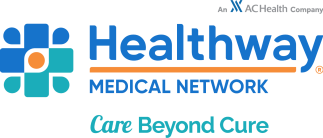In the realm of healthcare, understanding and preventing the spread of infectious diseases is paramount. The chain of infection, a series of linked events that enable the transmission of pathogens from an infected source to a susceptible host, provides a crucial framework for comprehending and interrupting this process.
The Epidemiologic Triad: Understanding the Interplay of Infection
The epidemiologic triad comprises three key components that contribute to the occurrence and severity of infectious diseases:
- Source or Reservoir: The source or reservoir refers to the origin of the infectious agent, which can be an infected individual, animal, or environmental reservoir.
- Susceptible Host: The susceptible host is an individual who lacks immunity to the infectious agent and is therefore at risk of developing an infection. Factors such as age, underlying illnesses, and immune status can influence susceptibility.
- Mode of Transmission: The mode of transmission describes the pathway through which the infectious agent is transferred from the source to the susceptible host. Common modes of transmission include contact transmission, droplet transmission, and airborne transmission.
Modes of Transmission: Understanding the Routes of Infection
Infectious agents can be transmitted through various modes, each with its unique characteristics:
- Contact Transmission: Contact transmission occurs when an infectious agent is directly or indirectly transferred to a susceptible host through physical contact. Direct contact involves direct person-to-person contact, while indirect contact involves contact with a contaminated object or fomite. Examples are Anthrax, Leptospirosis, Rabies, STDs and Leprosy.
- Droplet Transmission: Droplet transmission involves the dispersal of respiratory secretions, such as droplets produced when an infected individual coughs, sneezes, or talks. These droplets can land on mucosal surfaces, such as the eyes, nose, or mouth, of a susceptible host. Examples include Influenza and Respiratory Syncytial Virus infection.
- Airborne Transmission: Airborne transmission occurs when infectious agents, in the form of airborne droplet nuclei or small particles, remain suspended in the air and can be inhaled by susceptible hosts over longer distances. Some examples are measles, tuberculosis and chicken pox.
Prevention Strategies: Breaking the Chain of Infection
Effective prevention strategies focus on interrupting the chain of infection at any point:
- Hand Hygiene: Hand hygiene, including hand washing and hand rubbing with alcohol or a sanitizer, is the cornerstone of infection prevention. It removes transient microorganisms from the hands, preventing their transfer to susceptible hosts.
- Personal Protective Equipment (PPE): PPE, such as gloves, masks, gowns, and aprons, provides a physical barrier between healthcare workers and infectious agents, reducing the risk of cross-contamination.
- Patient Placement and Transport: Single-patient rooms are preferred to minimize cross-transmission. Cohorting, grouping patients infected with the same organism, can be considered when single rooms are limited.
- Respiratory Hygiene and Cough Etiquette: Covering the mouth and nose when coughing or sneezing, using tissues and disposing of them properly, and maintaining spatial separation reduce the spread of airborne droplets.
- Safe Injection Practices: Proper injection practices, including avoidance of recapping, bending, or breaking used needles; the use of sharps disposal containers and employing single-dose vials, minimize the risk of transmission of blood borne pathogens.
- Transmission-Based Precautions: Transmission-based precautions, such as contact, droplet, and airborne precautions, are tailored to the specific mode of transmission, emphasizing isolation, spatial separation, and appropriate PPE use.
- Respirator Fit Testing: Respirator fit testing ensures that respirators, such as N95 masks, fits your face providing a tight seal to keep you protected from pathogens and also to prevent you from spreading microbes to others.
By understanding the chain of infection and implementing effective prevention strategies, healthcare professionals can play a crucial role in curbing the spread of infectious diseases and safeguarding the health of patients and communities. Remember, every effort made to interrupt the chain of infection contributes to a healthier and safer environment for all.











